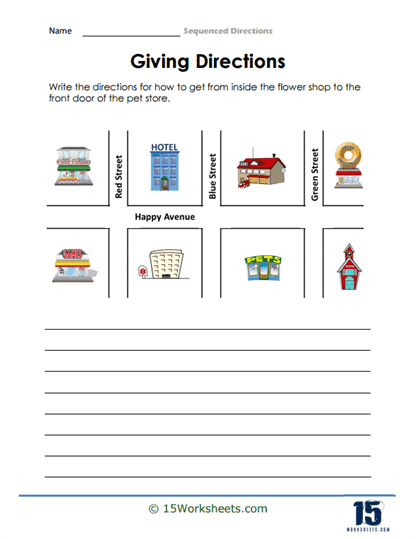

This series of 15 worksheets is a valuable resource designed to help students develop the essential skill of providing clear and coherent instructions. These worksheets offer a structured approach that guides students in organizing their thoughts, using appropriate sequencing words, and crafting effective step-by-step directions.
The exercises focus on developing students’ ability to provide concise and logical instructions in both written and verbal forms. Students learn how to break down complex tasks into manageable steps and communicate their instructions in a clear and sequential manner. Through these worksheets, students will:
This series is suitable for students across different grade levels and can be integrated into language arts classes, communication skills workshops, or practical life skills training. By using these worksheets, teachers provide their students with the tools to provide clear and coherent instructions, enhancing their communication skills and fostering effective collaboration.
Through the exercises, students develop essential skills in organization, logical thinking, and effective communication. In summary, they empower students to break down complex tasks, provide step-by-step instructions, and communicate their ideas with clarity and coherence. This Sequenced Directions worksheets series prepares students to become effective communicators who can provide instructions that are easily understood and followed by others.
In order to perform a task or a routine exactly the way it is supposed to be carried out, people usually need well explained and properly sequenced directions. The directions will help people know how many steps they need to perform and the correct order of the steps to achieve the desired result.
This is why when you’re sequencing your directions for people to follow, it’s important to ensure clarity, logical flow, and step-by-step progression. Here’s a guideline that teachers can share with their students:
Parents can give out well-sequenced directions to their children in order to help them complete a given task or a chore. For instance, look at the passage containing directions below:
The instructions are given out in a proper sequence, allowing children to know exactly which chore they need to do first and which chore is to be done at the end.
Moreover, sequenced directions are used in offices, clinics, train stations, etc. Employees need directions to fulfill their daily occupational tasks. These directions help remove confusion, minimize the chances of error, and reduce the need for an additional person to help guide the process.
For instance, the following directions would help the nurses at a clinic do their job in the desired manner:
Furthermore, sequenced directions are also commonly found in instruction manuals that come with different gadgets or electronics. These sequenced directions help a person assemble a gadget or an electronic in the required manner with great ease.